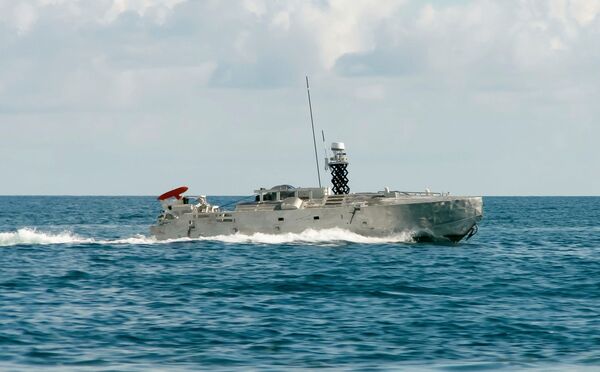- About
- Intara
- Capabilities
- Advisory
- Resources
- News
- Store
18 May 2022
Pentagon budget 2023: LCS mission module continues apace as US Navy notes cost breach
by Michael Fabey


The US Navy expects to reach initial operational capability in 2022 with the Littoral Combat Ship countermine mission module, which will employ unmanned surface vessels like this prototype developed by Textron. (US Navy)
Despite the officially required US Navy (USN) notification on 13 May of significant cost growth for Littoral Combat Ships (LCSs) Mission Module (MM) packages, programme officials say the work for remaining MMs is moving ahead as anticipated.
Navy spokesperson Captain Clayton Doss confirmed to Janes on 16 May that the USN notified Congress of an increase in Program Acquisition Unit Cost (PAUC) and Average Procurement Unit Cost (APUC) for the LCS MM programme that would exceed the original baseline estimate by at least 30% and the current baseline by at least 15%, breaching the so-called Nunn-McCurdy Provision in federal law that requires lawmakers be notified when cost growth meets those thresholds.
“Specifically, PAUC increased by 37.3% from the original baseline,” Capt Doss said. “PAUC increased by 18% and APUC increased by 17.2% from the current baseline.”
The US Government Accountability Office (GAO) notes that the first full procurement estimate for the LCS MMs in August 2007 was about USD3.8 billion for 64 units. The GAO cost estimate in September 2020 was about USD3.9 billion for 49 units.
These units included MMs for countermine, antisubmarine, and surface warfare packages.
Already a Janes subscriber? Read the full article via the
Client Login
Interested in subscribing, see What we do
Despite the officially required US Navy (USN) notification on 13 May of significant cost growth for ...
Associated services
 Details
Details 